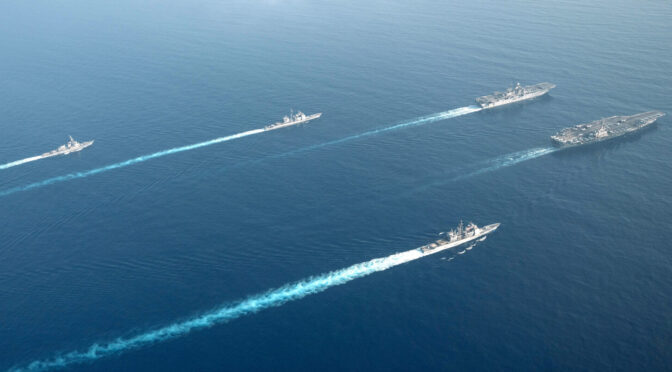Submissions Due: October 25, 2023
Topic Week Dates: November 13-17, 2023
Article Length: 1,500-3,000 words
Submit To: Content@cimsec.org
By Col. Todd Lyons, USMC (Ret.)
The 2022 U.S. National Defense Strategy calls for competing “across all domains and the spectrum of conflict” to gain military advantage, enhance deterrence, and address gray zone challenges. The strategy encourages an integrated approach across government organizations, activities, domains, and with allies. It also calls for U.S. competitive efforts to be structured into campaigns, with the strategy defining campaigning as “the conduct and sequencing of logically linked military initiatives aimed at advancing well-defined, strategy-aligned priorities over time.” Campaigns take the form of long-term and thoughtfully planned endeavors, as opposed to more diffuse and short-term efforts. They can enable successful competition in peacetime and set conditions for victory in wartime.
What does integrated campaigning mean for naval forces? A starting point proposed by some at the Naval Postgraduate School is that, “An integrated naval campaign is a series of operations in, and from, the maritime domain conducted by joint, interorganizational, and allied forces to achieve national strategic and operational objectives.” What forms can an integrated naval campaign take, and how might it enhance or benefit from all elements of national power? What emerging capabilities might enhance naval integration with partners and allies? How may unmanned force structure transform naval campaigning? Concepts for naval campaigning could define how naval forces evolve and operate for years to come.
The U.S. Naval Postgraduate School’s Naval Warfare Studies Institute (NWSI) is exploring these questions through its FY22-23 Warfare Innovation Continuum, themed “Integrated Naval Campaigning.” NWSI is exploring these questions through workshops, course projects, wargaming, and research initiatives. The NPS Foundation is honored to support the Naval Postgraduate School and is partnering with CIMSEC to solicit articles on integrated naval campaigning.
Some questions to explore include:
- How might emerging technologies and concepts enhance naval campaigning?
- What force design best supports an integrated naval campaign?
- How do the concepts of Marine Corps stand-in forces and the U.S. Navy’s Distributed Maritime Operations support integrated naval campaigning?
- How might the U.S. partner with regional organizations or countries to support an integrated naval campaign?
- How might gray zone activities set the conditions for, or obstruct preparations for integrated naval campaigning?
- What warfighting domains, U.S. organizations, or allies are critical for the success of an integrated naval campaign?
- How might lessons from past integrated naval campaigning inform 21stcentury campaigns?
Authors are encouraged to consider these questions and more as the need for integrated naval campaigning becomes clearer and more urgent. Send all submissions to Content@cimsec.org.
Colonel Todd Lyons retired from the Marine Corps after 30 years of service. He currently serves as the Vice President for the Naval Postgraduate School Foundation and Alumni Association. In this role, he assists in connecting industry, academia, alumni, and DoD entities to accelerate the responsiveness of NPS to the challenges arising from strategic competition and emerging technology. He also serves as a volunteer instructor for Innovation Leadership at NPS.
Featured Image: April 9, 2021 – The Theodore Roosevelt Carrier Strike Group transits in formation with the Makin Island Amphibious Ready Group in the South China Sea. (U.S. Navy photo by Mass Communication Specialist 3rd Class Terence Deleon Guerrero)

